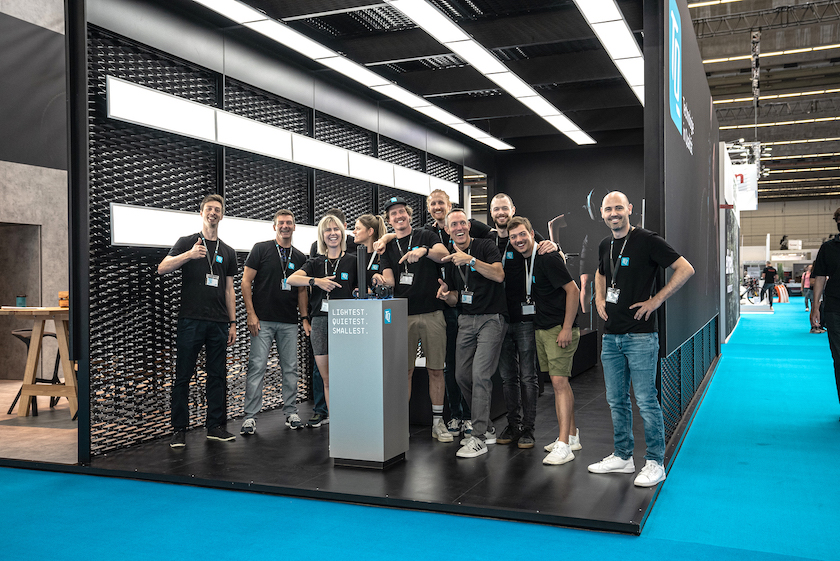
• Flip Book • eNews • eAdventures • eCities • eCargoIntl • eBikeTypes • eRoad • eMTB • eUrban • eCargo • eBikeTests • eAccessories • eFactoryTours • eFeatures •

• Flip Book • eNews • eAdventures • eCities • eCargoIntl • eBikeTypes • eRoad • eMTB • eUrban • eCargo • eBikeTests • eAccessories • eFactoryTours • eFeatures •
May 8, 2024 - (Oberwangen, SUI) Tucked away on a plateau in the town of Oberwangen, just a 15-minute ride from the Swiss capital of Bern, lies Stromer.
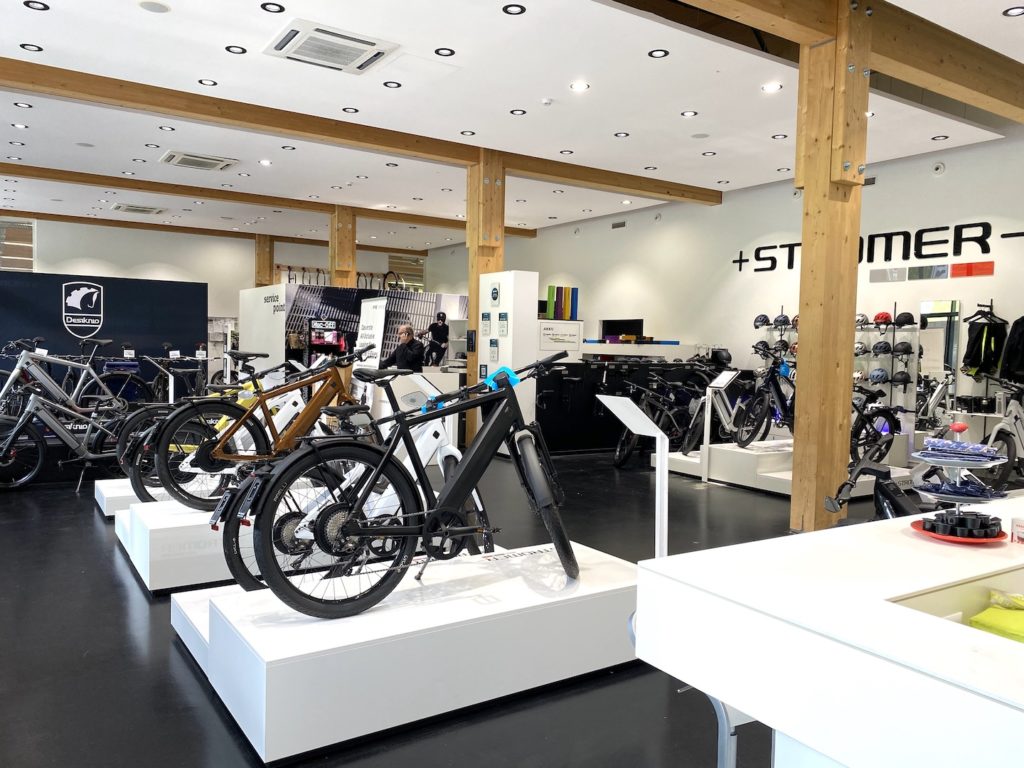
Since 2009, myStromer AG has called this place home and has been honing its high-end e-bike niche, manufacturing quality Speed Pedelecs (similar to Class 3 e-bikes in the USA) ever since.
The Stromer Campus is a modern- looking, three-level building where the company manages the majority of its business operations for its 600 global retailers. Home to 121 employees working in various departments, including administration, research and development, engineering, assembly and shipping, it is also the site of Stromer’s flagship concept store.
“It is important to have everything under one roof,” comments Christoph Lindlein, Global Marketing Director. “It also gives us 100% quality control with the ability to react quickly.”

However, the company’s continued growth is putting pressure on their facility’s limited space and has forced them to adapt by utilizing every square inch in a highly organized, structured and efficient manner — with the accuracy and precision of a Swiss clock.
The entrance to the Stromer Campus is via their flagship concept store which carries the company’s full line of e-bikes, along with their newly acquired Desiknio electric bicycles. Just outside of the main door, a demo fleet containing a full selection of their current offerings sits in a neat row.
“It’s also important to provide consumers with an opportunity to test the product so they can see firsthand the value they are getting from their investment,” explains Lindlein.
The top floor of the building houses Stromer’s administration offices in a big, open-concept design. Office staff use a “hot desk” approach by taking whatever station is free when they arrive. Even the CEO embraces the “musical desk” approach when starting his workday.
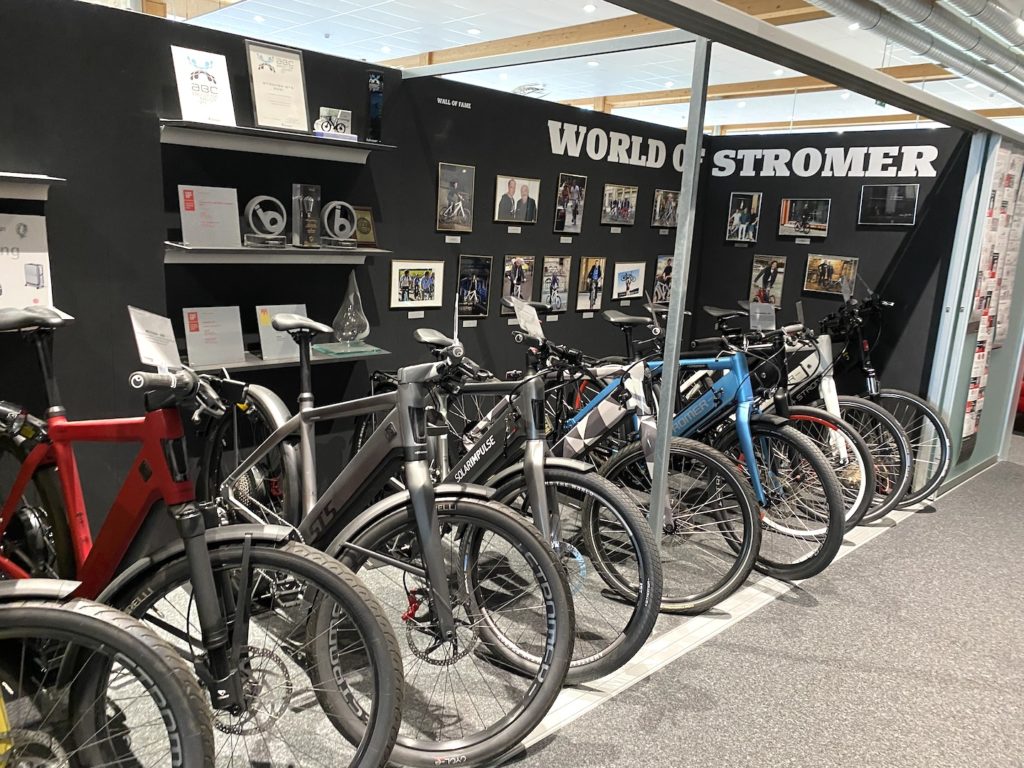
There’s also a dedicated area featuring Stromer’s many awards and accomplishments, including their recent Red Dot: Best of the Best 2023 Award in the category of Production Design for the ST7 model.
The main floor is where the e-bikes are assembled and shipped out to Stromer’s 25 global markets. As each Stromer is uniquely made for each customer’s individual specifications, this side of the operation requires a sophisticated, well-designed gameplan with complete buy-in from their highly skilled staff.
The assembly line workday begins at 7:20am with a group briefing led by the Team Leader, to ensure a smooth and efficient day. The briefing outlines the day’s agenda and quota, and it highlights key information needed to ensure quality control. The workday ends at 16:45 with another gathering for a debrief.
Only a perfect frame makes the cut, with each frame being thoroughly checked and examined before hitting the assembly line. Each frame is then branded with a Vehicle ID # along with a printed sheet which outlines the unique build for that specific frame.
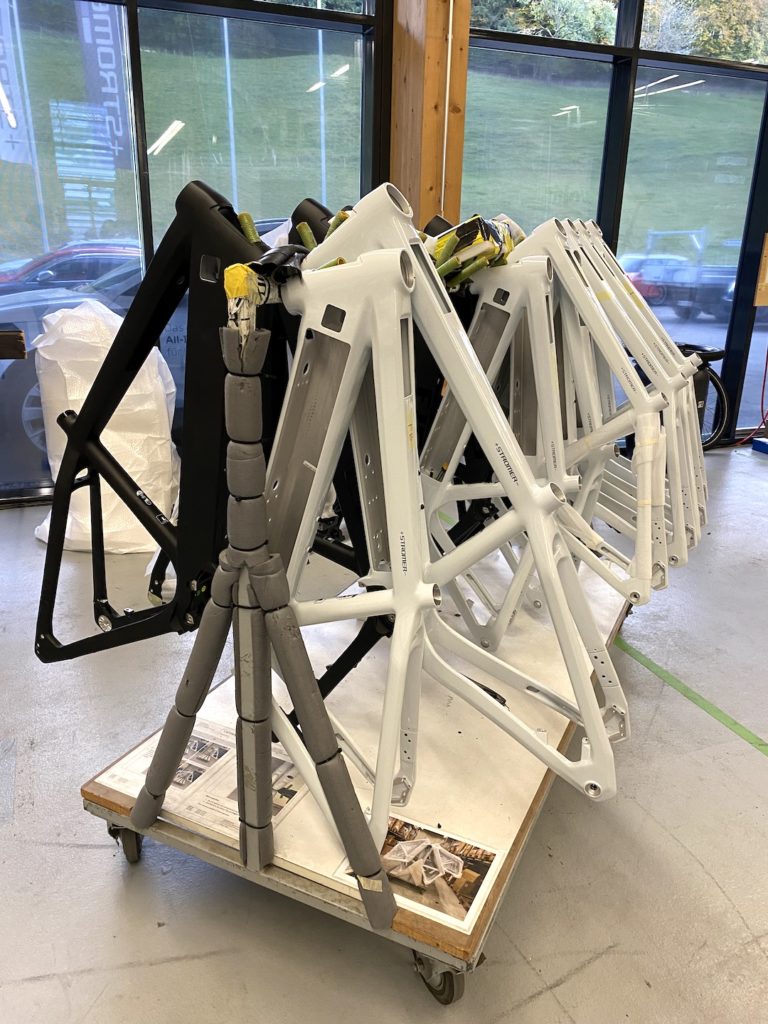
Larger groups of components including wheels, fenders, racks, forks and cockpits are pre-assembled before hitting the assembly line. To facilitate pre-assembly, Stromer taps into a special outside source for workers.
“We have teamed up with a group supporting individuals wanting to integrate back into the workforce, along with groups that work with people with physical challenges like blindness, to handle pre-assembly,” explains Lindlein. “We have found that this saves us about 20 minutes of assembly time while also providing an opportunity for these unique groups of people. It is a win-win partnership.”
Once on the assembly line, each frame is placed on a moveable stand for its journey through eight different stations. A worker at each station is responsible for installing anywhere from 5 to 20 parts on the frame before moving it down the line.
Stromer has two assembly lines, and depending on the model it can take anywhere from 10 to 20 minutes per station. At full capacity, with both lines in operation, Stromer produces up to 90 bikes per day. On the day of our tour, the company was on schedule to produce 48 complete bikes.
At the end of the line, the serial number on each e-bike is scanned to ensure it has been built to its correct specifications. Then a full logistics test begins from checking the entire electronics system on each e-bike, to ensuring each bolt is tightened to its correct torque. Once completed, the e-bikes head to the packing and shipping department which is one floor down.
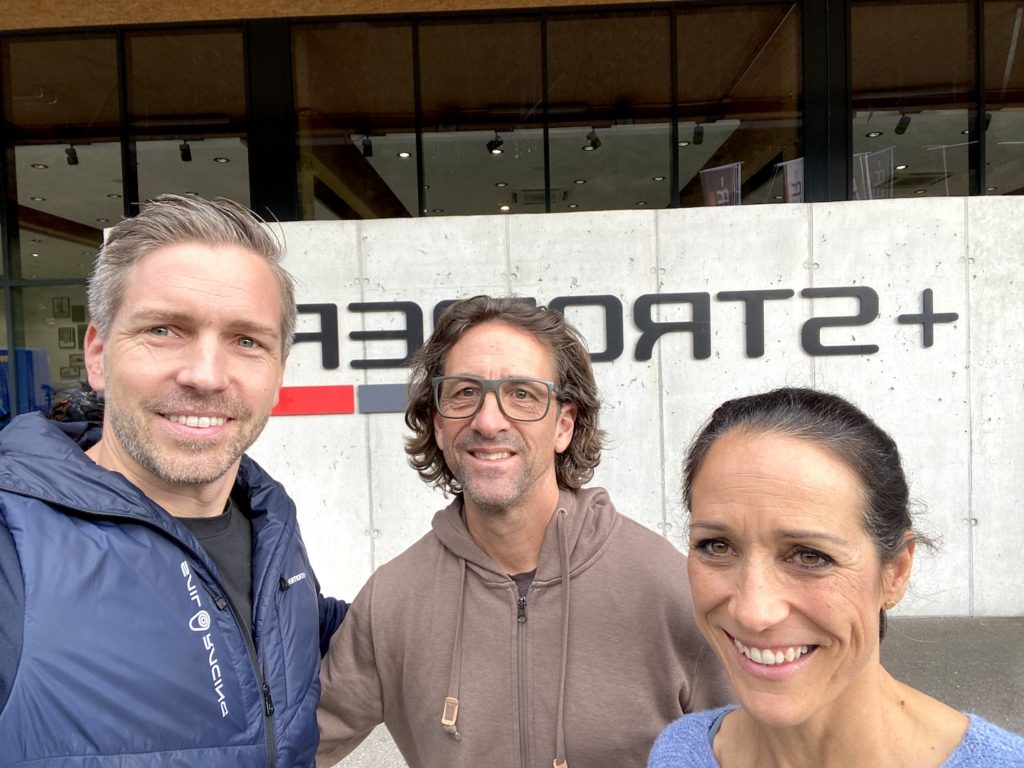
Stromer discovered early on that a rear hub motor was the best choice for their road-savvy commuter-style e-bikes.
With nothing available on the market to meet their standards, they began producing their own line of motors in- house, along with designing batteries to match.
According to Stromer, their rear hub motors produce more thrust, are quieter, and are 20% more efficient than other motors on the market. “We have always used rear hub motors,” comments Fabienne Gilliéron, Stromer’s Communication Manager. “They’re the most efficient for commuting.”
The company currently produces five motors and four batteries, with each motor unique to each of Stromer’s five e-bike models. The motors range from the 670-watt CYRO Drive II with a 655Wh battery and a range of 120km available on the ST1, all the way up to the massive 940-watt SYNO Sport II motor on the ST7 with a 1,440Wh battery providing up to 240km of range.
In July 2022, Stromer unveiled their flagship ST7, the world’s first e-bike to use the Pinion’s Smart.Shift drive system technology, a feature now available on other models as well.
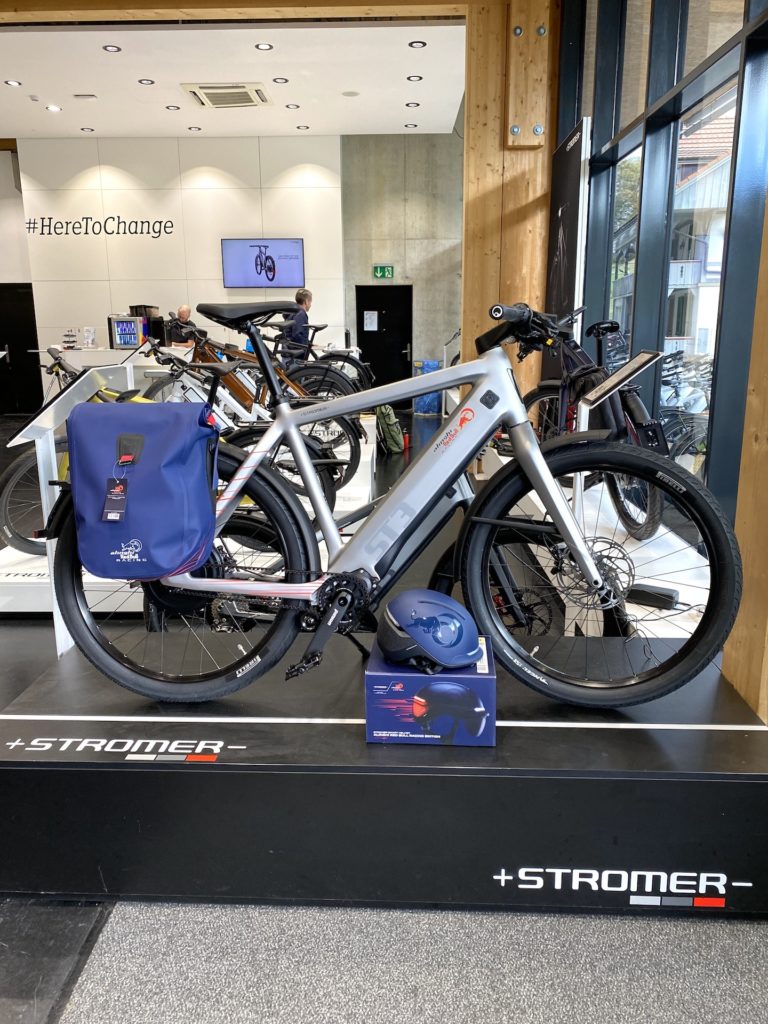
Later that year, Stromer became the official e-bike supplier to the Alinghi Red Bull Racing Team vying for the 37th annual America’s Cup in the sport of sailing, the oldest international trophy in world sport. A limited edition custom-painted ST7 ARBR-SE e-bike, complete with a logo-embossed leather bag, was also released — only 350 will be produced to mark the occasion.
In North America, there are currently 50 dealers offering Stromer’s full line of e-bikes. To meet the legal Class 1 restrictions in Canada (32kph) and other markets where Speed Pedelecs are not permitted, the motors are tuned down to match the required max speed limits.
The company’s new strategic alliance to merge with Desiknio Cycles SL in Spain is designed to open up new markets as Stromer’s Speed Pedelecs are more suited for commuter routes of 15km or more, while Desiknio’s premium e-bikes are best for inner-city traffic.
Stromer’s unique business model has seen the company survive the pandemic and the recent challenges experienced by other e-bike companies during these current unpredictable economic times. In fact, Stromer saw a 17% increase in sales globally in 2022.
Stromer’s current upward trajectory in growth has put a strain on the available space at their current facility. The search for a larger, ideally one-level building has not come to fruition. With a desire to maintain the current workforce, any move would need to be within a 20km radius.
But with nothing currently available, they have opted to stay put and are working with architects on a major renovation planned for later this year.
Stromer’s future plans will keep them quite busy over the upcoming years. They have positioned themselves well to continue their expansion with Speed Pedelecs, and they have diversified their portfolio with quality partnerships like Desiknio.
Along with Oberwangen, they currently have three additional global facilities based in Den Bosch, Netherlands, Cluj, Romania and in Vista, California, with the possibility of more in the works.
With their planned renovations in Oberwangen, including expanding their concept stores into new markets, Stromer will continue to make waves well into the future, from where it all started — in Switzerland.